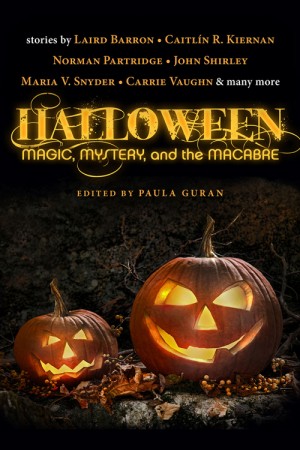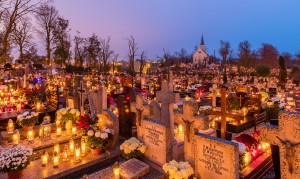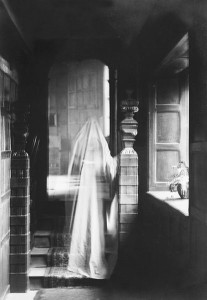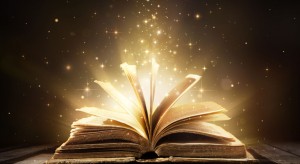By Paula Guran
Hark! Hark to the wind! ’Tis the night, they say,
When all souls come back from the far away—
The dead, forgotten this many a day!
—“Hallowe’en,” Virna Sheard
While researching and compiling the anthology Halloween, a treasury of reprinted stories published by Prime Books in 2011, I felt there was a need for some fresh tales for the old theme. Halloween: Magic, Mystery, and the Macabre is the result: eighteen new works of Halloween-inspired fiction. Happy Halloween!
 Since I provided a lengthy essay about the holiday and its history as an introduction to Halloween, I won’t repeat myself here. But I will reiterate a few ideas pertinent to this volume.
Since I provided a lengthy essay about the holiday and its history as an introduction to Halloween, I won’t repeat myself here. But I will reiterate a few ideas pertinent to this volume.
Until fairly recently, we humans were much closer to nature and our lives far more dependent on the annual cycle of the seasons. For most of the northern hemisphere, autumn meant crops had to be harvested and stored, livestock slaughtered or secured for winter months. Survival during the upcoming darker colder days of winter must be considered and assured. But we couldn’t simply depend on nature, hard work, or even a bountiful harvest when it came to such matters of life-and-death; the season begat celebrations, ceremonies, rituals, religious beliefs, and the working of magic.
In Western European tradition—particularly that of the Celts—fall also marked one of the two times of the year (the other was the beginning of summer) when the mundane world was supposedly the closest to the “other world.” The friendly dead could commune and visit with the living; less-than-friendly supernatural entities could cause harm. Beloved souls traveled abroad, but so did fairies, vengeful ghosts, and malign spirits. One did one’s best to appease all. Christianity gave the English language the word Hallowe’en sometime during the sixteenth century: a Scottish contraction of All Hallows’ Eve (evening)—the night before All Hallows’ Day, set by the Church on November 1. The “hallows” being the “hallowed”—the holy—commemorated on that feast day, also known as All Saints Day, the Feast of All Saints, and Solemnity of All Saints.

All Saints’Day at a cemetery in Gniezno, Poland – flowers and candles placed to honor deceased relatives
The connection with the dead and the supernatural was too powerful to be obliterated by merely honoring saints, so All Souls Day—also known as the Commemoration of All Faithful Departed—was established on November 2. The living could remember and pray for the souls of all the (Christian) dead; prayers offered for souls in Purgatory could alleviate some of their sufferings and help them reach heaven.
Th is was all well and good, but the older ways and beliefs persisted. Folks still believed the dead and supernatural beings wandered on All Hallows Eve; they were still—at least for that one night—part of the living world. Rituals and traditions were adapted and continue to endure and evolve.
This—combined with other superstitions, bits of ancient and newer religions, different regional undertakings to prepare for winter and harvest, a hodgepodge of ethnic heritages, diverse cultural influences and practices, and various occult connections that seem always to be associated with the season—eventually became a celebration of otherness when scary things are acceptable, disguise is encouraged, and everyone can become anyone or anything they wish.
The season has always offered us an opportunity to consider or confront the coldest, darkest, deepest, most primal of our fears: death. In a multitude of ways the basic meaning of Halloween and the symbols and practices that have become associated with it—pranks, pumpkins, treats, bonfires, masks and costumes, the supernatural, the fright, the fun—are ways of dealing with or even mocking that which comes to us all.
 We might have faith or theory or hopes about what comes after death—a 2013 HuffPost/YouGov poll showed forty-five per cent of American adults believe in ghosts, or that the spirits of dead people can come back in certain places and situations; sixty-four per cent believe there’s a life after death. But no one really knows, do they?
We might have faith or theory or hopes about what comes after death—a 2013 HuffPost/YouGov poll showed forty-five per cent of American adults believe in ghosts, or that the spirits of dead people can come back in certain places and situations; sixty-four per cent believe there’s a life after death. But no one really knows, do they?
Of course there’s always the chance that Halloween truly is a time when magic is possible, that forces beyond our ken are present, that the living and the dead can interact.
Magic, mystery, and the macabre—elements that inspire thoughts of the fantastic, the enchanting, the supernatural, the horrific, that which is not explainable, and so much more involved with the holiday.
When soliciting stories for this anthology, I asked the writers keep that in mind. “Scary” was not necessarily the goal, but is a natural part of the mix. Nor did stories need to adhere to customs associated with the primarily North American Halloween as we know it today. Other—real or imagined—holidays and rituals that coincide with or parallel the Halloween season, or have connections to it could also be themes. Sometimes the fact that it is Halloween became the linchpin of a story.
The remarkable results are contained within. These tales are each a treat; no tricks involved, but there are certainly some very interesting twists. In Laird Barron’s “Black Dog,” a Halloween date in a whistle-stop town leads the protagonist far beyond its Catskills location. A small-town legend combines the sinister spells of a certain silver screen and Halloween in Stephen Graham Jones’s “Thirteen.”
In Dunhaven, Brian Hodge’s isolated town of “We, the Fortunate Bereaved,” Halloween is a school holiday and genuine dark magic occurs on All Hallows Eve. Jonathan Maberry’s “Long Way Home” takes us back to his mysterious town of Pine Deep, Pennsylvania, on Halloween as a soldier returns from war. Brenda Cooper also revisits a fictional site she previously introduced—a truly enchanting place on the other side that is more or less analogous to Laguna Beach, California—in “All Hallows in the High Hills.”
 The season’s thin veil between the living and the dead is gently breached and a soul does some traveling in Melanie and Steve Rasnic Tem’s “Lesser Fires.” “Angelic” by Jay Caselberg also brings a family together for an annual get-together, but one fraught with far more meaning than one relative is aware. A strange multi-generational alliance in 1930s Kansas culminates with a Halloween harvest in Laura Bickle’s “From Dust.”
The season’s thin veil between the living and the dead is gently breached and a soul does some traveling in Melanie and Steve Rasnic Tem’s “Lesser Fires.” “Angelic” by Jay Caselberg also brings a family together for an annual get-together, but one fraught with far more meaning than one relative is aware. A strange multi-generational alliance in 1930s Kansas culminates with a Halloween harvest in Laura Bickle’s “From Dust.”
A modern witch copes with trust issues and Beggars’ Night in Nancy Kilpatrick’s “Trick or Treat.” Another witch manages some challenges of contemporary life by moving into a man’s new home—uninvited and accompanied by her cat—for the month leading up to All Hallows Eve in “For the Removal of Unwanted Guests” by A. C. Wise.
Both Norman Partridge and Carrie Vaughn take monsters whose popular tropes began in 1930s movies and are now connected to Halloween—the mummy and the werewolf—and add their own imaginative components: human trauma and psychosis in Partridge’s “The Mummy’s Heart,” and the World War II Nazi SS in Vaughn’s “Unternehmen Werwolf.” “Pumpkin Head Escapes” by Lawrence Connolly creates an entirely new boogeyman by combining theatrical and Halloween magic.
A visit to a haunted house unexpectedly takes the ghost hunters to a cemetery and a strange encounter in Barbara Roden’s “All Souls Day.” A hospital’s emergency room staff deals with Saturday night, the full moon, Halloween, and the weird in Chelsea Quinn Yarbro’s “Quadruple Whammy.”
In John Shirley’s “And When You Called Us We Came To You,” a young Chinese factory worker making products for the huge commercial U.S. Halloween market calls for aid from those who wait beyond the darkness, and they answer—thousands of miles away amid American teenagers. “Whilst the Night Rejoices Profound and Still” by Caitlín R. Kiernan takes us to a far future, another planet, and a strangely evolved festival with roots in our ancient celebration. Maria V. Snyder’s “The Halloween Men” are enforcers in a strange time and place far different than our own.
I’m sure that our All Hallows Eve brew will help make this a happy Halloween for those who consume it. With some luck—and maybe the casting of a magic spell or two—perhaps Halloween: Magic, Mystery, and the Macabre will become part of the season itself.
Paula Guran
Beltane 2013